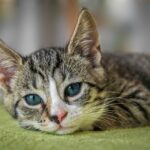How Often Should You Feed Your Cat? A Comprehensive Guide to Feline Feeding Schedules
Cats are creatures of habit, and feeding time is often a highlight of their day. As a responsible cat owner, you want to ensure your feline friend is happy, healthy, and receiving the proper nutrition. One of the most common questions cat owners ask is: “How often should I feed my cat?”
The answer, as with many aspects of cat care, isn’t always straightforward. It depends on several factors, including your cat’s age, activity level, health condition, and the type of food you’re offering. This comprehensive guide will walk you through everything you need to know about creating the perfect feeding schedule for your feline companion.
Why is Feeding Frequency Important?
Consistent and appropriate feeding frequency contributes significantly to your cat’s well-being:
- Regulated Metabolism: Regular meals help maintain a stable metabolism, ensuring your cat efficiently processes food and absorbs nutrients.
- Weight Management: Controlled feeding helps prevent overeating and obesity, a common health issue in cats.
- Digestive Health: Consistent meal times can promote healthy digestion and prevent issues like vomiting or diarrhea.
- Behavioral Benefits: Scheduled feeding can reduce begging and food-related anxiety. It also helps establish a routine that provides comfort and security for your cat.
- Overall Health and Longevity: Proper nutrition and a healthy weight are crucial for a long and healthy life.
Factors Influencing Feeding Frequency:
Before establishing a feeding schedule, consider these crucial factors:
Age:
- Kittens (Under 6 Months): Kittens are growing rapidly and require frequent meals to support their development. They need more calories per pound of body weight than adult cats.
- Adult Cats (1-7 Years): Adult cats have established growth and typically require fewer, larger meals.
- Senior Cats (7+ Years): Senior cats may have decreased activity levels and slower metabolisms, requiring adjusted feeding schedules and potentially specialized diets. They may also have dental issues that make it difficult to eat dry food.
Activity Level:
- Active Cats: Cats that spend a lot of time playing, hunting, or exploring outdoors require more calories and may benefit from more frequent meals to maintain their energy levels.
- Less Active Cats: Indoor cats with sedentary lifestyles require fewer calories and should be fed less frequently to prevent weight gain.
Health Condition:
- Cats with Diabetes: Diabetic cats require carefully timed meals, often coinciding with insulin injections, to regulate their blood sugar levels. Consult with your veterinarian to determine the appropriate feeding schedule and diet.
- Cats with Hyperthyroidism: Cats with hyperthyroidism have an increased metabolism and often require more frequent meals to maintain their weight.
- Cats with Kidney Disease: Cats with kidney disease may need a special diet and adjusted feeding schedule to manage their condition.
- Other Medical Conditions: Any medical condition can affect a cat’s appetite, digestion, and nutritional needs. Work closely with your veterinarian to determine the best feeding plan.
Type of Food:
- Dry Food (Kibble): Dry food is convenient and can be left out for longer periods without spoiling (though this is generally discouraged – see below). It often contains a higher carbohydrate content than wet food.
- Wet Food (Canned Food): Wet food has a higher moisture content, which is beneficial for hydration. It’s generally more palatable and can be easier for cats with dental problems to eat. However, it spoils quickly once opened and should not be left out for extended periods.
- Raw Food: Raw food diets require careful preparation and handling to prevent bacterial contamination. Consult with a veterinarian or feline nutritionist before switching to a raw food diet. The feeding schedule for raw food will likely be different than for dry or wet food.
Individual Cat Personality and Preferences:
- Some cats prefer to graze throughout the day, while others prefer structured meal times. Observing your cat’s eating habits and behavior can help you determine the best feeding schedule for them.
General Feeding Guidelines:
While individual needs vary, here are some general guidelines for feeding frequency based on age:
- Kittens (Under 6 Months):
- 0-3 Months: Free-feeding high-quality kitten food is generally recommended. Ensure fresh food is always available. Small, frequent meals are ideal for their rapid growth.
- 3-6 Months: Gradually transition to 3-4 meals per day. Begin to establish a more structured feeding schedule.
- Adult Cats (1-7 Years):
- Two Meals Per Day: This is a common recommendation for adult cats. Dividing their daily food allowance into two meals helps regulate their metabolism and prevent overeating.
- One Meal Per Day: Some adult cats do well with one large meal per day, but this may not be suitable for all cats. Observe your cat’s behavior and consult with your veterinarian to determine if this is the right approach.
- Senior Cats (7+ Years):
- Two or More Meals Per Day: Senior cats may benefit from smaller, more frequent meals. This can help with digestion and ensure they are getting enough nutrients, especially if they have dental issues or a decreased appetite.
Dry Food vs. Wet Food: Which is Best for Feeding Frequency?
The choice between dry and wet food significantly impacts feeding frequency considerations:
Dry Food:
- Pros: Convenient, can be left out for longer periods (but should be carefully monitored), often more affordable.
- Cons: Lower moisture content, can contribute to dehydration, may be less palatable for some cats, can be higher in carbohydrates.
- Feeding Frequency: Free-feeding dry food is often discouraged due to the risk of overeating and obesity. Scheduled meals are preferable, even with dry food.
Wet Food:
- Pros: High moisture content, more palatable, easier to chew for cats with dental problems, often lower in carbohydrates.
- Cons: Spoils quickly once opened, can be more expensive.
- Feeding Frequency: Wet food should be offered in scheduled meals and not left out for more than 30 minutes to an hour to prevent spoilage and bacterial growth.
The Dangers of Free-Feeding:
While free-feeding (leaving food out all day) might seem convenient, it can lead to several problems:
- Obesity: Cats are prone to overeating when food is constantly available, leading to weight gain and obesity-related health issues like diabetes, arthritis, and heart disease.
- Difficulty Monitoring Food Intake: It’s difficult to track how much each cat is eating in a multi-cat household when food is freely available.
- Increased Risk of Spoiled Food: Dry food can become stale and attract insects. Wet food will spoil quickly if left out.
- Behavioral Problems: Free-feeding can contribute to begging and other food-related behavioral issues.
How to Establish a Feeding Schedule:
- Consult with Your Veterinarian: Discuss your cat’s individual needs and health history with your veterinarian. They can provide personalized recommendations for feeding frequency and portion sizes.
- Measure Food Portions: Use a measuring cup or scale to accurately measure out your cat’s daily food allowance. Follow the guidelines on the food packaging as a starting point, but adjust as needed based on your cat’s weight and body condition.
- Divide the Food into Meals: Divide the daily food allowance into the desired number of meals. For example, if you’re feeding your cat two meals a day, divide the total daily amount in half.
- Set Consistent Meal Times: Feed your cat at the same times each day. This helps establish a routine and can reduce begging and anxiety.
- Monitor Your Cat’s Weight and Body Condition: Regularly monitor your cat’s weight and body condition. You should be able to feel their ribs easily without seeing them. Adjust the food portions as needed to maintain a healthy weight.
- Provide Fresh Water: Always ensure your cat has access to fresh, clean water.
Addressing Common Feeding Challenges:
- My Cat Begs Constantly: Ignore begging behavior. Do not give in to their demands, as this will reinforce the behavior. Ensure they are getting enough food at meal times and consider adding a small amount of fiber to their diet to help them feel full.
- My Cat Eats Too Quickly: Use a slow-feeding bowl or puzzle feeder to slow down their eating. This can help prevent vomiting and bloating.
- My Cat is a Picky Eater: Offer a variety of food textures and flavors to find something they enjoy. Warm up wet food slightly to enhance its aroma. Avoid constantly changing foods, as this can make them even pickier.
- Multi-Cat Household Feeding: Feed cats in separate areas to prevent food competition and ensure each cat is getting the appropriate amount of food. Consider using microchip-activated feeders to control access to food.
The Importance of High-Quality Food:
Regardless of the feeding schedule you choose, it’s essential to feed your cat a high-quality food that meets their nutritional needs. Look for foods that are:
- Complete and Balanced: Formulated to meet the nutritional standards established by the Association of American Feed Control Officials (AAFCO).
- Species-Appropriate: High in protein and low in carbohydrates.
- Made with High-Quality Ingredients: Avoid foods with artificial colors, flavors, and preservatives.
Conclusion:
Determining the optimal feeding frequency for your cat requires careful consideration of their individual needs, lifestyle, and health condition. While general guidelines exist, the best approach is to consult with your veterinarian, observe your cat’s behavior, and adjust the feeding schedule as needed. By establishing a consistent and appropriate feeding routine, you can contribute significantly to your cat’s health, happiness, and overall well-being. Remember that providing a high-quality diet and monitoring their weight and body condition are also crucial for a long and healthy life for your feline companion. A calm, patient approach and careful observation will help you tailor a feeding plan that works best for your beloved cat.
Featured Image Credit: Pixabay


